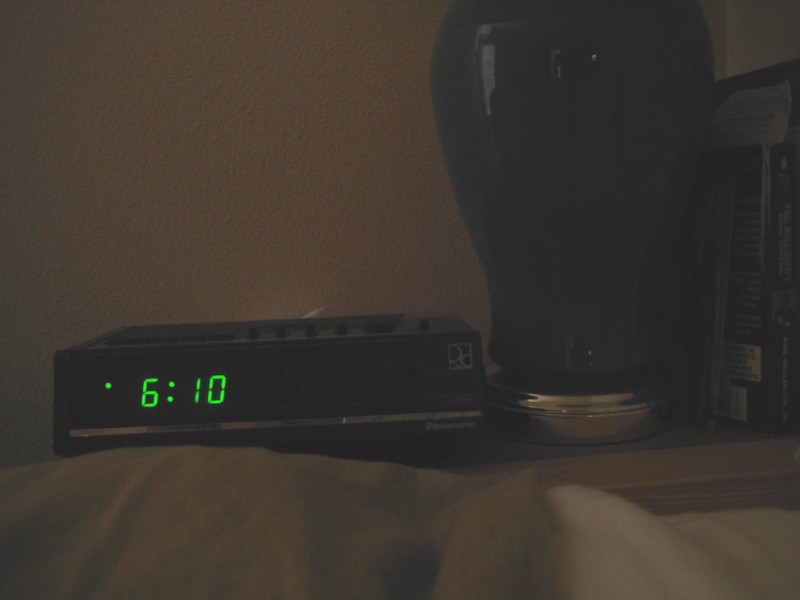There She Is, Miss Amrowica!

Fairest of the fur she isn’t.
“I need to return this cat.” I plop Miss Amrowica on the counter.
The volunteer graciously frowns. “If there’s something we — ”
“It doesn’t get enough likes.”
“It — it what?”
“Single-digit likes, and I’ve got the new iPhone and everything!” I do a real-life imitation of ¯_(ツ)_/¯.
“Did you — ”
“Kitty tiara, kitty collar and tie, kitty bunny ears, there’s nothing I haven’t tried!” My eyes narrow. “Cat’s a dud.”
“Meow,” says Miss Amrowica.
“When you signed the adoption form, you agreed to treat your animal companion as a member of your family.” Her tone is factual rather than argumentative.
“When I threw away 50 bucks on this lemon, it came with a four week no-questions-asked return guarantee.” It’s not as if I didn’t give the purry ball of love-but-no-likes the full month.
Another staffer approaches. “Did you try ‘Like & share or the cat gets it’?” He smiles broadly as the crassness of it washes over me. “We do it all the time,” he adds.
I tap, tap, tap on my screen, tap tap tap. “I’ll wait,” I tell them.
Hours later I’m scratching behind Miss Amrowica’s ears one last time.
“Mew,” says some other loser’s cat-to-be.
I Clicked A Headline About Chicken Tenders But All I Got Was This Newsletter
I feel duped.

A few quibbles: I was hoping to read a stirring defense of chicken tenders, which said New York Times piece by Sam Sifton (which is actually not a piece but the NYT’s Cooking newsletter, verbatim) does not provide. Strange, since it is headlaned, “The Case for Chicken Tenders.” First of all, chicken tenders shouldn’t need defending???? Second, there are many hyperlinks to Times recipes, but not one links to the canonical (watch me get murdered for this) appreciation of chicken tenders, which won a James Beard Award in 2016:
While we’re here: fuck panko. It’s fine, but it’s getting used way too much. It’s the dandruff flakes of bread and we can all do better. If you like yourself, use flour, and if you love yourself, use buttermilk.
Decapitating Consciousness
Philosophers and neuroscientists be damned — there is nothing even slightly mysterious about consciousness

I believe I am as conscious as anyone. When I am awake and my eyes are open, I see a stable, colorful, and continuous world all around me, and that world doesn’t wobble when my eyes move. This fact alone suggests that I am experiencing consciousness, because what I am perceiving transcends the visual signals my retinas are receiving. Those signals are messy, in part because eyes move almost continuously and in part because the retina includes an area — the scotoma — that doesn’t react to light; it is a blind spot that is somehow getting filled in by my brain.
My other senses also help me perceive a rich and orderly world which is, I am fairly sure, being constructed by my brain — more evidence that I am “conscious.” I am also reasonably good — as good as one can be, anyway, which isn’t very good — at picturing things from my past: people I used to know, places I have visited, the room I slept in when I was four. I can also imagine things I have never seen, even things that could never exist: the Eiffel Tower upside-down, Donald Trump with three heads, a line of people a mile long waiting to take advantage of the free food offer at the Russian Tea Room in New York (now there is a fantasy).
I also talk to myself a great deal. And, yes, I also experience a wide range of feelings — as wide, I believe, as anyone feels. At the moment, I am mainly feeling nervous about all the criticism I will get from various “experts” about the content of the essay I am now writing.
So, do I qualify? Do I seem to you to be conscious, or at least to be a good liar who knows what to say to convince people I am conscious? Let’s assume the former, at least for the moment, so I can get on with things.
My world has always been full of mysteries, such as: What happens to the thousands of tons of rubber that wear off the tires of our cars and trucks every year? Why isn’t it piling up on the sides of our roads, blocking the views of our houses? And: If I hang upside down every day, will I get taller or at least stop shrinking as I get older?
For much of my adult life, I have also wondered about something that is supposed to be mysterious but that has never seemed so to me: Why, for centuries, have people considered consciousness to be something beyond human understanding? Now don’t get me wrong. By “people,” I don’t mean people in general. Most people don’t think much about consciousness, other than having some dim awareness of the fact that alcohol and drugs screw it up and, of course, that sleep or a good head bashing temporarily turn it off. And then there is death, of course.
No, by “people,” I mean a special class of people who are paid — at least a few of them are paid — to sit around and think about everything and then debate each other about their thoughts and then, in some cases, train other people to think about things exactly the same way they do. You know, academics.
For at least two millennia now, such people, and especially the philosophers among them, have insisted (a) that consciousness is one of the greatest mysteries in the world and (b) that they have solved or at least shed light on this mystery, each in his or her own special way. I could at this point try to impress you with what a dedicated scholar I am by summarizing and then criticizing the views of Aristotle and Augustine, Dennett and Descartes, Heidegger and Hume, Hegel and Nagel, Kant and Carnap, James and Jaynes, Plato and Penrose, Russell and Ryle, and on and on and on. The list of scholars who have weighed in on consciousness is so impressive and diverse that sometimes I think people write about consciousness just to get on a list with Plato and Aristotle on it. Perhaps that is why I am writing this article now!
Instead of slogging through the list, however, I will simply suggest you watch a popular 2014 TED talk by the Australian philosopher, David Chalmers — perhaps the leading consciousness expert in the world. In a mere 18 minutes, he will confirm three things for you: (a) that he believes consciousness is “the most mysterious phenomenon in the universe” (not just one of the most mysterious phenomena, and not just on planet Earth), (b) that “we are well on our way to a serious theory” of consciousness — a statement he has repeated in various forms for more than 20 years now, and, unfortunately, (c) that he actually has no idea what consciousness is or how it works. At least that is I how interpret the video; you make up your own mind.
Chalmers is a champion of the “panpsychism” view of consciousness, according to which consciousness is a property of everything in the universe — and since we are part of the universe — well, there you are. Got it? He also says consciousness is like “a movie playing in your head.” And then there is Stuart Hameroff and Roger Penrose’s neural theory of consciousness, according to which consciousness arises from the vibrations of millions of microtubules in the neurons of the brain. Philosopher Patricia Churchland has labeled this the “pixie dust” theory of consciousness, which I think sums up the flaws of the theory nicely. How does moving consciousness to small structures in brain cells shed any light on it?

Consciousness theorists routinely commit at least one of three analytical errors when formulating their theories — often, all three. The first is the reification error. That is when we start to treat some phenomenon as a thing, even though it is not. When Einstein and his contemporaries began speculating about the existence of subatomic particles, they were not committing this error; they believed these particles existed, and subsequent research confirmed their speculations in some respects. When we start to treat “consciousness” as a thing, however, we are reifying. Consciousness is not a thing, a place, or a world — more on this later.
The second error is autocentrism, which I define as excessive focusing on the experience of being “me.” Humans have routinely impeded the progress of science by putting some aspect of themselves into the center of things. In the 1600s, Galileo was punished by the Catholic Church for defending Copernicus’ assertion that the earth is not the center of the universe (“geocentrism”). “Eurocentrism,” which, among other things, means imposing European values on the rest of the world, has distorted thinking and theories in anthropology, sociology, literature, and other fields. Psychology, my own field, was troubled by another kind of centrism called “anthropomorphism” — the attributing of human characteristics to nonhumans. We just love focusing on ourselves, sometimes to our detriment.
The third error is an extreme form of autocentrism I call cognicentrism: focusing specifically on the importance of one’s own cognitive experiences, as if one’s thought processes had some special significance. Modern scientific psychology was launched in 1879 by a cognicentric German scientist named Wilhelm Wundt, who believed that a science of cognition was possible. Wundt, in turn, had been influenced by the work of another German scientist, Gustav Fechner, who had been searching since the mid1800s for laws of “psychophysics” — laws relating the mental world to the physical (Chalmers said he too was searching for “psychophysical laws” in an article he published in 1995).
Cognicentrism is the most pernicious of the three errors. Some academics are so fascinated by their own internal movie — it is in full color, after all, with 3-D and surround sound — they think it must be real, never considering a much simpler and more sensible possibility.
As an exercise, please set aside for the moment the questionable assertion that consciousness is a thing or a place or a world or a movie; in other words, resist the temptation to reify. Also, please consider the possibility that the fact that you seem to have a strong sense of being you is not actually a big deal — not big enough to build a science around, anyway. Finally, even though you seem to have a movie playing in your head, please entertain the idea that there really is no movie in your head (because there isn’t) and that your conscious experiences might not be as important as you think they are. In other words, as best you can, please set aside any autocentric or cognicentric inclinations you might have.

This brings me, finally, to what I am pretty sure consciousness actually is. Following the tradition of the many great sages who have gotten us so confused about consciousness, I will explain my perspective initially through an analogy — let’s call it The Hot Tub Harry Analogy.
Hot Tub Harry is sitting up to his neck in hot water. He can feel the heat, the flow of the water around him, the bubbles — even, let’s say, the texture of the water, which is a bit oily. To simplify matters, we shall plug his ears and nose and cover his eyes, so that most of the stimulation he is receiving is coming from receptor cells in his skin. He and the water form a kind of system, like a fetus does with a womb.
A few feet away from this hot-tub system (HTS) stands a scientist who is speculating about what it is like to experience life in the HTS. She is not having much luck, though, because she has never been in a hot tub and is not part of Harry’s HTS. She can see the system from afar, but she is not part of it. She can see vapor rising from the water, which suggests the water is hot, but she cannot feel the water. She can see bubbles and signs of currents, but she cannot feel them. Moreover, no matter how closely she examines the system from the outside, she cannot say anything about what it is like to be part of the system. Meanwhile, Harry has no trouble at all feeling exactly what it is like to be part of the system. There is, in general, an enormous difference between being an integral part of a system and being outside a system.
Our brains are not only part of our bodies, they are also wired directly to it, including to all of our sense organs. Light entering our eyes stimulates light-sensitive cells on our retinas, which in turn stimulate nerve cells that connect to our brain through a bundle of nerve fibers. A fraction of a second later, through a process that is not yet understood, neural processes allow us to see a stable and continuous version of the world around us. The visual part of what we call our “consciousness” is our experience of seeing that world. Our brain also manages to integrate much of the chaotic and noisy stimulation that surrounds us into coherent wholes; in fact, as the research of Gestalt psychologists demonstrated a century ago, our brain seems almost driven to create wholes from parts and order from chaos. We have two eyes, after all, sending two somewhat different stimulus patterns into our brain, which somehow manages to coordinate them.
This shouldn’t be too surprising. The scotoma is present in all vertebrates, and so are two eyes. Given the superb eye-limb coordination that is evident throughout the animal kingdom, it would appear that brains have evolved to stabilize images, fill in gaps, and organize and simplify stimuli. No matter what the species, the owners of brains that did not do such things would have quickly been culled from the gene pool. Imagine a saber-toothed tiger that had to prowl around its environment using the unsmoothed, rapidly shifting, incomplete, somewhat differing images being projected onto the retinas of its two eyes; even if, by some miracle, it managed to find its prey, the prey might have eaten it long before it managed to eat its prey.
The fact that we do not yet understand how the brain accomplishes these transformations is not important. Consciousness is the observational experience we have after these transformations have taken place.
So, getting back to Harry, he can, through receptor cells in his skin, feel properties of the water, and he can also observe himself feeling properties of the water. He is built not only to sense properties of the world around him (which are then smoothed by the brain in various ways), he is also built to observe some aspects of his own functioning. Remarkably, he can also visualize events from his past while sitting in the hot tub — even fantasize about things that have never occurred.
We experience different degrees of consciousness, of course. When Harry starts to get drowsy from the hot water, his consciousness fades, which is to say he observes less and less about the surrounding environment and about his own observational experience. He might also adapt to some aspects of his environment, which means, by definition, that his awareness of those aspects of his environment dims; over time, for example, he will probably get used to the temperature of the water. Harry also has some control over what properties of his environment and experience he pays attention to. When he pays close attention to what he is experiencing in the moment, we might say he is highly conscious of what is around him. If his thoughts drift to other matters, we might say he is only dimly conscious of what is around him.
No matter how you cut the cake, consciousness is simple observation — either of properties of the environment around us or of properties of our own experience, both past and present. Although it is true that Hot Tub Harry’s conscious experiences while he sits in the tub are not accessible to the observer outside the tub, they are by no means mysterious.
Perhaps you will object: Hold on! you say. The analogy is flawed! Harry is a person with sense organs and a brain! All you have done is push the problem of consciousness to another location, just as Hameroff and Penrose did when they attributed consciousness to the vibrations of microtubules.
But I wasn’t done yet! Let’s work on Harry a bit — nothing too drastic, just a minor surgical modification: Let’s get rid of his body, leaving his brain and skin receptors in the water. We shall also add nutrients to the water to keep his tissue healthy. Because Harry’s brain and skin receptors are alive in the HTS/nutrient bath, he is presumably still conscious of the properties of the water — the currents, the temperature, the bubbles — even still free to let his attention wander to other matters. We can prove that the bodiless Harry has been conscious by sewing his brain and skin receptors back into his body and asking him about his recent experience. Were you conscious during our experiment, Harry? Hell yes, he replies, and is all this stitching going to leave any scars? He can even describe the experience for us. This is part of the wonder of the human brain: our ability to re-live past experiences to some extent — to re-member (from the Latin re, “again”, and memorari, “be mindful of”).
But consciousness itself is not mysterious. Hot Tub Harry’s consciousness was nothing more than his active observation of both his environment and his cognitive activities while his brain was immersed in a nutrient bath and connected to a sense organ.

But where, you ask, is Harry in all this? Who or what is doing all this observing? Is Harry a little homunculus hidden somewhere in his brain? Absolutely not. There is no homunculus, and there is also no Harry. The entity that calls itself “Harry” is just a curious property of this entity’s consciousness — a kind of bonus that comes from our ability to remember our past: Although our brains change continuously throughout our lives, the changes are generally small enough so that we retain a sense of continuity from one minute to the next, even from one year to the next. The sense of continuity creates the illusion of “self” or “I” or “me.”
As real as the self feels, however, it is truly just an illusion — one that is vulnerable to disruption. Psychedelic drugs, a head injury, oxygen deprivation, mental illness, disease and aging can all degrade the sense of self, even obliterate it completely. I have met people in clinical settings who have completely lost their sense of self; it is painfully sad. Are such people conscious? Yes, but because they have no identity and very little past, their conscious experience is limited mainly to the observation of their current environment.
Although the self is an illusion, consciousness is not, and, contrary to popular opinion, it is also not “subjective.” To call it so demeans the experience unjustifiably. Seeing is quite real; it has clear physical correlates that can be measured. The fact that the owner of the brain who is doing the seeing has an experience no one else can share is beside the point; his or her experience is no less real. The experience is distinct mainly because the brain owner is part of the system that is doing the seeing. The experience is also a bit odd because the owner, being part of the system, can not only see; he or she can also see him- or herself seeing. The physical correlates of his or her self-observation might be hard to find, but they are presumably findable.
So here is my question for you: Are you something more than a brain floating in a nutrient bath and connected to a body and sense organs — an organic system that interacts with the world? If so, how exactly are you something more, and how can you prove that?

The model I am describing may not be attractive (except for the hot tub, maybe), but I believe it accounts fully for consciousness, at least as I experience it. Consciousness is the brain owner’s experience of observing the world and his or her own body and behavior. This experience seems remarkable mainly because of the convenient ways the brain irons out stimuli, but the smoothing process, as I said, is almost certainly an evolutionary imperative for the brains of many species. The brain stabilizes images, fills in gaps, and sometimes integrates separate stimuli into orderly wholes, but none of these things is miraculous. We build cameras that stabilize images and software applications that integrate and transform diverse media components any way we like. If we can build such things, so can evolution.
As for the “unconscious” — the mythical, reified world popularized by Sigmund Freud — while we are capable of observing the world around us and some aspects of our own behavior and cognitive activity, our observation powers are also limited. We behave and change and learn all the time without explicitly observing such things, and we also are terrible at explaining why we behave as we do. Our limited abilities are just that. They are not evidence that another world — an “unconscious” one — exists to complement the non-existent “conscious” world. Reifying our observational experience was bad enough; inventing yet another non-physical world to explain what our observations can’t make sense of is truly absurd.
This brings me to Henry and Tiny Bryan, my family’s cat and dog, respectively. The never-ending and largely pointless debate about the nature of consciousness has occasionally been extended to animals. Are animals conscious? I cannot share the conscious experiences of Henry or Tiny Bryan any more than I can share yours, but I have no doubt that virtually all vertebrates are conscious very much as humans are. If they can observe the world around them, if they can observe their own bodies, and if they show signs of being able to remember things, then they are conscious — lacking only the linguistic tools to reflect upon and analyze their existence. Charles Darwin said as much in The Expression of the Emotions in Man and Animals (1872).
In some respects, some non-human animals are probably more conscious than we are, either because their sense organs are more sensitive or because they have senses we lack. Some birds can directly detect properties of the earth’s magnetic field; elephants can detect subtle seismic signals; sharks, platypuses, and electric eels can sense electrical fields. What we have in common with all of them is that each of us is a brain floating in a nutrient bath and connected to a body and sense organs. Whatever the species, the brain owner in such a system is probably conscious during most of its waking hours.
Alas, even with all the extra cortical tissue that distinguishes us from lesser beings in the animal kingdom, humans do not think clearly. We are highly prone to errors of thinking — reification, autocentrism, and cognicentrism being just three of our many weaknesses. We are easily swayed, especially by authority figures, and once we have adopted some belief, we attend selectively to evidence that supports that belief, no matter how shoddy it may be (a phenomenon called “confirmation bias”). This means that the perspective I have described in this essay will not only be difficult for many people to accept, it will also draw criticism from “experts” whose careers, reputations, and livelihoods depend on defending their own positions, no matter how weak, cumbersome, or absurd. (The whole universe is conscious? Give me a break.) Over the course of the 40 years since I entered graduate school in psychology, I have known of only one major figure in my field who recanted a theory he had been staunchly defending for much of his career — more than 20 years in this case. This remarkable shift was an exception to the rule; when academicians develop and defend a theory, it is almost always to the death.
Although I think I am right about consciousness, I do not expect people to rally round me in support. Our immediate experience, combined with a long history of brainwashing — um, sorry, I mean education — tells us, mistakenly, that consciousness is both mysterious and non-physical and that our “self” is every bit as real as our driver’s license. Immediate experience, again combined with brainwashing, also told people for millennia that the world was flat, and millions of people still believe that today. We may be conscious, but are we smart enough to admit what consciousness really is?
Bonus: in Dr. Epstein’s essay, “Decapitating Consciousness: Responses to My Imaginary Critics,” he responds to six ways experts are likely to criticize the above. Here’s the ending:
If consciousness is really as simple a phenomenon as I say — present in most animals and even possible for a computer to achieve — doesn’t that put us poor humans back into the natural world, the one with fungi and paramecia and sloths? Doesn’t this characterization of consciousness rob us of the afterlife? Doesn’t it suggest that the computers we are so busy building these days might soon outperform us in every way, even in the level of consciousness they achieve? You bet.
Robert Epstein (@DrREpstein) is Senior Research Psychologist at the American Institute for Behavioral Research and Technology in Vista, California and the former editor-in-chief of Psychology Today magazine. He is the author of 15 books and more than 250 scholarly and popular articles on creativity, artificial intelligence, and other topics.
They Can Take An Hour of Sleep Away! But They Can Never Take Away Our Zzzdom!
And other answers to unsolicited questions

“Daylight Saving Time is coming up this weekend! What can we do?” — Timeless Timothy
The Government is going to steal an hour of sleep from you this weekend. If this doesn’t make you open up your nuclear bunker and hide inside why do you even have a nuclear bunker? Thanks, Trump. And thanks, Obama, for not having put an end to this hideous tradition while we still had a sensible Executive Branch. Even though time is clearly an illusion, it’s a tough one to work around. Resist and you will probably lose your job for being late all the time. Comply and you’ll be just another one of the sheeple complaining about a lack of sleep next Sunday. There has to be a better way.
If you’re like me, you always take the week off before the clocks move ahead. I spend 5 vacation days completely rejiggering my internal clock. One night I’ll stay up till 6 a.m. watching all of Season One of “Twin Peaks.” Another day I’ll spend the whole time awake for an hour and then sleeping for an hour. By the time Sunday comes I’ll be so delirious I will barely notice that the clocks have moved ahead an hour. Because I will be a complete basket case.

Daylight Saving was invented so farmers could farm with the sun and little kids didn’t have to walk to school in complete darkness. But farmers should just get headlights for their tractors or something. And what school kid has to walk themselves to school? They are practically shackled to their parents whenever they aren’t at school. Kids do what we tell them. They can’t vote, they can’t drive cars and if they need flashlights to walk to school, so be it.
Kids these days already have a super-easy time of it. They never have to move out of their parents’ houses. They have phones and computers; when I was young all we had was Pong and Pac-man. And they live in a time when nerds have conquered popular culture! Movies and TV are no longer about popular kids. They’re about nerdy kids saving the world. Kids have plenty. They can walk to school by the light of the moon engulfed in flames, as far as I’m concerned. With all this global warming we’ve given them, they don’t even have to walk up hill in the snow for miles to get to school. So shut up and play with your tablets.
If you can’t take 5 work days off in a row, you can move the clocks ahead a little bit every day. 10 minutes here, fifteen minutes there. Build up to the future sunshiny crazy you’ll have to deal with at the end of the week. Mornings will be forced to be bright! Sleeping in will be practically impossible. I still believe that they only keep this Daylight Saving thing going because they use the extra hour in November to pull off some kind of worldwide money scam while the clocks are changing. I haven’t figured out exactly how they do it yet, but when I do it will be the main plot to the blockbuster movie I write about the entire thing, and the log line is, “THEY GAVE YOU AN HOUR AND TOOK AWAY YOUR SOUL.” I think Donald Glover might star in it.
If the government is truly supposed to stay out of your bedroom, why do they change the time when everyone is asleep instead of moving the clocks ahead an hour on a Friday afternoon when we all could have a long weekend? It’s because they’re laundering all your money in the middle of the night. Turning euros to pesos and then back to euros in some kind of super illegal one-hour-a-year global ripoff. It would make a great James Patterson book. One I’d be happy to write for him. He wouldn’t even have to read it.
Jim Behrle lives in Jersey City, NJ and works at a bookstore.
Alarm Clock
The Adventures of Liana Finck

Liana Finck’s work appears in The New Yorker and Catapult, and on her Instagram feed. Her first book, A Bintel Brief, was published by Ecco Press in 2014.
Different For Girls
What does power look like?

Pretty much everything Mary Beard writes is worthy of attention, and this is no exception:
It is happily the case that in 2017 there are more women in what we would all probably agree are ‘powerful’ positions than there were ten, let alone fifty years ago. Whether that is as politicians, police commissioners, CEOs, judges or whatever, it’s still a clear minority — but there are more…. But my basic premise is that our mental, cultural template for a powerful person remains resolutely male. If we close our eyes and try to conjure up the image of a president or (to move into the knowledge economy) a professor, what most of us see isn’t a woman. And that’s just as true even if you are a woman professor: the cultural stereotype is so strong that, at the level of those close-your-eyes fantasies, it is still hard for me to imagine me, or someone like me, in my role. I put the phrase ‘cartoon professor’ into Google Images — ‘cartoon professor’ to make sure that I was targeting the imaginary ones, the cultural template, not the real ones. Out of the first hundred that came up, only one, Professor Holly from Pokémon Farm, was female. To put this the other way round, we have no template for what a powerful woman looks like, except that she looks rather like a man.
This is the thing to read today.
Sharon Van Etten, "The End of the World"
It can’t come soon enough.

I am sorry to keep banging on about my theory that every day is a combination of Monday and Friday now, but as it has become apparent that crazy doesn’t even take the weekend off anymore it is impossible to deny that each morning feels like a Monday morning these days. Guess what? Real Mondays aren’t any easier to take just because you’ve gotten used to their rest-of-the-week facsimiles. Everything is impossible to face now. Let’s just be quiet for a bit and listen to this terrific Sharon Van Etten cover of the Skeeter Davis classic “The End of the World.” Enjoy. And good luck out there, it’s Monday today.
New York City, March 2, 2017

★★★★ The building made creaking sounds in the night that it had not made before in a hurricane or a blizzard. The whole south end of the forecourt was taped off, because the corrugated metal floor of the scaffolding there had come apart and begun flying away in pieces under the strain. The remaining floor flapped in place; the tape rattled like an automatic weapon emptying a clip. A gust down the avenue flattened back the five-year-old’s hair as he leaned into it. “The wind was so big, I couldn’t even take one breath,” he said when it had passed. Confusingly, in all its clawing, the wind was less than cold. Exposed skin seemed like it should be freezing but did not. Out of the gusts, it was almost pleasant. An immense vortex of trash spun down the sidewalk on Fifth Avenue, too wide to steer around. People struggled against the air with body language that looked exaggerated until one stepped out to join them. At nightfall the five-year-old was still telling people about how strong the morning gale had been.
Trombone Shorty, "Here Come The Girls"
Mardi Gras is over, but there’s this.

Sweet mother of Christ, this day. You know what would help us finish it off? This cover of the Ernie K-Doe classic “Here Come The Girls,” off of the forthcoming Trombone Shorty record. Enjoy, and let’s get out of here.
The Sleakening
Privacy is an illusion.

Earlier this week, Slack announced it had discovered a security breach in its browser application that could have led to hackers stealing full usernames and passwords, granting them access to all their logs. Your logs. My logs. Not Travis Kalanick’s logs, unfortunately, because Uber left Slack last year. A very kind Swedish man named Frans Rosén alerted the company through their “bug bounty” system, for the price of $3,000 and my endless gratitude.
As one very astute media critic put it last year, “I walk around telling people I think privacy is an illusion, which is not to say I don’t think it’s a right.” We are only as safe as the sum of our social contracts. Slack has over four million daily users, a quarter and a million of those are paying subscribers. Imagine if all those logs became available to the public by way of some major hack? First everyone would search their own name, which is only natural. Then the corporate espionage would begin. Just kidding, but journalists would have a heyday sniffing out corporate malfeasance, and someone would be made to look bad, but then also someone would be made to look human, and reasonable people would start to feel icky about it.
Let’s try a parable. You work at a very big and well-regarded company, so big it is part of a larger conglomerate, which, as big companies do, experiences the occasional office relocation. There is much talk of fancy architecture and floor-to-ceiling panes of glass, but there is also the very dire matter of a new trend in office socioarchitecture: the open-plan office. Specifically, the idea of having many fewer (or even zero) offices with doors. “But how will they know who the important people are who make the most money!” cry out the office-havers. “How else can I unhook my bra straps while I eat lunch without anyone around me seeing?” And probably someone will reply, “We have provided you with a common area between the ping-pong table and the espresso machine.”
But there really is an advantage to the space with walls around it, beyond just the removal of audible and visible distraction. It is the psychological aspect to the office as a room for your mind to think or behave differently because you think no one can see you. (My favorite proof of this is the clear door. I can still see your screen and also your finger up your nose.) Behind a closed, opaque door, you can whisper and put heads together and conduct illicit affairs and plan coups that will never happen. You can gripe and commiserate, but you can also laugh and let go. All kinds of good and bad things happen in offices. Indeed, one of the better arguments in favor of preserving the office is, “But what about all the difficult conversations I need to have as part of my job?”
But whether or not there are walls, workers will still find a way to carve out that little office of the mind. In the age of open-plan offices we’ve built ourselves little spaces of our own where we can be in constant communication, silent but for the tap-tap of our greasy fingers. The most notable thing about Twitter and Facebook and Office Messenger and HipChat and Slack and Instagram and on and on and on is that they all have private messaging capabilities within them. Closets within rooms where two or a few people go to have sensitive or even just very specific conversations, without the specter of an audience. It’s worth something, that feature, but it costs something too.
Humans are constantly looking for little cubbies to put their secrets in. You should just accept right now that the Slack leak can and probably will happen, but you shouldn’t let that change the way you use it. Even if you take things to Signal, you will never achieve true vacuum-sealed privacy, because privacy is a system and not a space. It’s a contract, not a stipulation. What’s it going to look like when, inevitably, someone comes along and turns the whole thing upside down and shakes all the gossip out? It’s going to look like every one of us has a time when we needed to have a backchannel to say something we know not everyone wanted to or should hear. There but for the grace of God type I.
